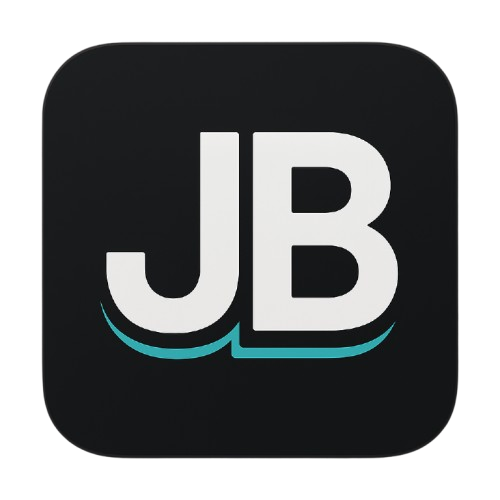Building High-Performance Infinite Scroll for E-commerce with Next.js, Prisma, and React Query
Create seamless product browsing experiences with cursor-based pagination, optimistic loading, and intersection observer APIs. This comprehensive guide covers everything from database setup to production-ready infinite scroll implementation that handles thousands of products efficiently.
Complete Guide: Implementing Infinite Scroll in E-commerce with Next.js
This comprehensive guide will walk you through implementing infinite scroll for product listings in an e-commerce application using Next.js, Prisma, PostgreSQL, and React Query.
Table of Contents
- Prerequisites
- Project Setup
- Database Setup with Prisma
- API Route Implementation
- Frontend Components
- Data Fetching Logic
- Styling and UI
- Testing and Optimization
- Troubleshooting
Prerequisites
Before starting, ensure you have:
- Node.js 18+ installed
- PostgreSQL database running
- Basic knowledge of React, Next.js, and TypeScript
- Understanding of database concepts
Project Setup
Step 1: Create Next.js Project
pnpm create next-app@latest my-ecommerce-app
cd my-ecommerce-app
When prompted, select:
- ✅ TypeScript
- ✅ ESLint
- ✅ Tailwind CSS
- ✅ App Router
- ❌ src/ directory (optional)
Step 2: Install Required Dependencies
# Core dependencies
npm install prisma @prisma/client
npm install @tanstack/react-query
npm install react-intersection-observer
# Development dependencies
npm install -D @types/nodeStep 3: Environment Setup
Create .env file in your project root:
# Database
DATABASE_URL="postgresql://username:password@localhost:5432/ecommerce_db"
# API Base URL (for production, use your actual domain)
NEXT_PUBLIC_API_BASE_URL="http://localhost:3000"Database Setup with Prisma
Step 4: Initialize Prisma
pnpm dlx prisma init
Step 5: Create Prisma Schema
Create or update prisma/schema.prisma:
generator client {
provider = "prisma-client-js"
}
datasource db {
provider = "postgresql"
url = env("DATABASE_URL")
}
model Product {
id String @id @default(cuid())
name String
description String?
price Float
imageUrl String?
category String?
inStock Boolean @default(true)
createdAt DateTime @default(now())
updatedAt DateTime @updatedAt
@@map("products")
}Step 6: Set Up Prisma Client
Create lib/prisma.ts:
import { PrismaClient } from "@prisma/client";
const globalForPrisma = globalThis as unknown as {
prisma: PrismaClient | undefined;
};
export const prisma = globalForPrisma.prisma ?? new PrismaClient();
if (process.env.NODE_ENV !== "production") globalForPrisma.prisma = prisma;Step 7: Run Database Migration
pnpm dlx prisma migrate dev --name init
npx prisma generate
Step 8: Seed Sample Data (Optional)
Create prisma/seed.ts:
import { PrismaClient } from "@prisma/client";
const prisma = new PrismaClient();
async function main() {
const products = [];
for (let i = 1; i <= 50; i++) {
products.push({
name: `Product ${i}`,
description: `This is a description for product ${i}`,
price: Math.floor(Math.random() * 1000) + 10,
imageUrl: `https://picsum.photos/400/300?random=${i}`,
category: ["Electronics", "Clothing", "Books", "Home"][
Math.floor(Math.random() * 4)
],
});
}
await prisma.product.createMany({
data: products,
});
console.log("Seeded 50 products");
}
main()
.catch((e) => {
console.error(e);
process.exit(1);
})
.finally(async () => {
await prisma.$disconnect();
});Add to package.json:
{
"scripts": {
"seed": "tsx prisma/seed.ts"
}
}Run the seed:
pnpm add -D tsx
npm run seed
API Route Implementation
Step 9: Create Types
Create types/product.ts:
export interface Product {
id: string;
name: string;
description?: string;
price: number;
imageUrl?: string;
category?: string;
inStock: boolean;
createdAt: Date;
updatedAt: Date;
}
export interface PaginatedResponse<T> {
data: T[];
hasMore: boolean;
nextCursor?: string;
totalCount?: number;
}Step 10: Create API Route
Create app/api/products/route.ts:
import { NextRequest, NextResponse } from "next/server";
import { prisma } from "@/lib/prisma";
import { Product, PaginatedResponse } from "@/types/product";
export async function GET(request: NextRequest) {
try {
const { searchParams } = new URL(request.url);
const cursor = searchParams.get("cursor");
const limitParam = searchParams.get("limit");
const limit = limitParam ? parseInt(limitParam, 10) : 10;
if (limit > 50) {
return NextResponse.json(
{ error: "Limit cannot exceed 50 items per request" },
{ status: 400 }
);
}
const queryOptions: any = {
take: limit + 1,
orderBy: {
createdAt: "desc",
},
select: {
id: true,
name: true,
description: true,
price: true,
imageUrl: true,
category: true,
inStock: true,
createdAt: true,
updatedAt: true,
},
};
if (cursor) {
queryOptions.cursor = {
id: cursor,
};
queryOptions.skip = 1;
}
const products = await prisma.product.findMany(queryOptions);
const hasMore = products.length > limit;
const data = hasMore ? products.slice(0, -1) : products;
const nextCursor = hasMore ? data[data.length - 1]?.id : undefined;
const response: PaginatedResponse<Product> = {
data,
hasMore,
nextCursor,
};
return NextResponse.json(response);
} catch (error) {
console.error("Error fetching products:", error);
return NextResponse.json(
{ error: "Internal server error" },
{ status: 500 }
);
}
}Frontend Components
Step 11: Set Up React Query Provider
Create providers/query-provider.tsx:
'use client';
import { QueryClient, QueryClientProvider } from '@tanstack/react-query';
import { useState } from 'react';
export function QueryProvider({ children }: { children: React.ReactNode }) {
const [queryClient] = useState(() => new QueryClient({
defaultOptions: {
queries: {
staleTime: 60 * 1000, // 1 minute
retry: 1,
},
},
}));
return (
<QueryClientProvider client={queryClient}>
{children}
</QueryClientProvider>
);
}Update app/layout.tsx:
import { QueryProvider } from '@/providers/query-provider';
export default function RootLayout({
children,
}: {
children: React.ReactNode;
}) {
return (
<html lang="en">
<body>
<QueryProvider>
{children}
</QueryProvider>
</body>
</html>
);
}Step 12: Create Data Fetching Action
Create actions/data.ts:
import { PaginatedResponse, Product } from "@/types/product";
const API_BASE_URL = process.env.NEXT_PUBLIC_API_BASE_URL || "";
export async function getProducts(
cursor?: string,
limit = 10
): Promise<PaginatedResponse<Product>> {
try {
const params = new URLSearchParams();
params.set("limit", limit.toString());
if (cursor) {
params.set("cursor", cursor);
}
const response = await fetch(`${API_BASE_URL}/api/products?${params}`, {
cache: "no-store",
});
if (!response.ok) {
throw new Error("Failed to fetch products");
}
return await response.json();
} catch (error) {
console.error("Error fetching products:", error);
throw new Error("Failed to fetch products");
}
}Step 13: Create Product Card Component
Create components/product-card.tsx:
import { Product } from '@/types/product';
import Image from 'next/image';
interface ProductCardProps {
product: Product;
}
export function ProductCard({ product }: ProductCardProps) {
return (
<div className="group relative bg-white rounded-lg shadow-md hover:shadow-lg transition-shadow duration-200">
<div className="aspect-square w-full overflow-hidden rounded-t-lg bg-gray-200">
{product.imageUrl ? (
<Image
src={product.imageUrl}
alt={product.name}
width={400}
height={400}
className="h-full w-full object-cover object-center group-hover:scale-105 transition-transform duration-200"
/>
) : (
<div className="h-full w-full bg-gray-200 flex items-center justify-center">
<span className="text-gray-400">No image</span>
</div>
)}
</div>
<div className="p-4">
<h3 className="text-lg font-semibold text-gray-900 truncate">
{product.name}
</h3>
{product.description && (
<p className="mt-1 text-sm text-gray-600 line-clamp-2">
{product.description}
</p>
)}
<div className="mt-2 flex items-center justify-between">
<p className="text-lg font-bold text-gray-900">
${product.price.toFixed(2)}
</p>
{product.category && (
<span className="inline-flex items-center px-2.5 py-0.5 rounded-full text-xs font-medium bg-blue-100 text-blue-800">
{product.category}
</span>
)}
</div>
<div className="mt-3">
<button className="w-full bg-blue-600 text-white py-2 px-4 rounded-md hover:bg-blue-700 transition-colors duration-200">
Add to Cart
</button>
</div>
{!product.inStock && (
<div className="absolute inset-0 bg-gray-900 bg-opacity-50 flex items-center justify-center rounded-lg">
<span className="text-white font-semibold">Out of Stock</span>
</div>
)}
</div>
</div>
);
}Data Fetching Logic
Step 14: Create Infinite Scroll Component
Create components/product-listing.tsx:
"use client";
import { getProducts } from "@/actions/data";
import { useInfiniteQuery } from "@tanstack/react-query";
import { useEffect } from "react";
import { useInView } from "react-intersection-observer";
import { ProductCard } from "./product-card";
export function ProductListing() {
const { ref, inView } = useInView({
threshold: 0,
triggerOnce: false,
});
const {
data,
fetchNextPage,
hasNextPage,
isFetchingNextPage,
isLoading,
error,
} = useInfiniteQuery({
queryKey: ["products"],
queryFn: ({ pageParam }) => getProducts(pageParam),
getNextPageParam: (lastPage) => {
return lastPage.hasMore ? lastPage.nextCursor : undefined;
},
initialPageParam: undefined as string | undefined,
});
useEffect(() => {
if (inView && hasNextPage) {
fetchNextPage();
}
}, [inView, fetchNextPage, hasNextPage]);
const products = data?.pages.flatMap((page) => page.data) ?? [];
if (isLoading) {
return (
<section className="container mx-auto px-4 py-8">
<h2 className="text-3xl font-bold text-gray-900 mb-6">Products</h2>
<div className="grid grid-cols-1 md:grid-cols-2 lg:grid-cols-3 xl:grid-cols-4 gap-6">
{[...Array(8)].map((_, i) => (
<div key={i} className="animate-pulse">
<div className="bg-gray-200 rounded-lg h-64 mb-4"></div>
<div className="space-y-2">
<div className="h-4 bg-gray-200 rounded w-3/4"></div>
<div className="h-4 bg-gray-200 rounded w-1/2"></div>
<div className="h-4 bg-gray-200 rounded w-1/4"></div>
</div>
</div>
))}
</div>
</section>
);
}
if (error) {
return (
<section className="container mx-auto px-4 py-8">
<h2 className="text-3xl font-bold text-gray-900 mb-6">Products</h2>
<div className="text-center py-12">
<p className="text-red-600">
Error loading products: {error.message}
</p>
<button
onClick={() => window.location.reload()}
className="mt-4 bg-blue-600 text-white px-4 py-2 rounded hover:bg-blue-700"
>
Retry
</button>
</div>
</section>
);
}
return (
<section className="container mx-auto px-4 py-8">
<h2 className="text-3xl font-bold text-gray-900 mb-6">Products</h2>
<div className="grid grid-cols-1 md:grid-cols-2 lg:grid-cols-3 xl:grid-cols-4 gap-6">
{products.map((product) => (
<ProductCard key={product.id} product={product} />
))}
</div>
{/* Loading indicator */}
{isFetchingNextPage && (
<div className="flex justify-center py-8">
<div className="animate-spin rounded-full h-8 w-8 border-b-2 border-blue-600"></div>
</div>
)}
{/* Intersection observer trigger */}
{hasNextPage && (
<div ref={ref} className="flex justify-center py-8">
<div className="text-gray-500">Loading more products...</div>
</div>
)}
{/* No more products */}
{!hasNextPage && products.length > 0 && (
<div className="text-center py-8">
<p className="text-gray-500">
You've reached the end of our product catalog!
</p>
</div>
)}
{/* Empty state */}
{products.length === 0 && (
<div className="text-center py-12">
<p className="text-gray-500">No products found.</p>
</div>
)}
</section>
);
}Styling and UI
Step 15: Update Main Page
Update app/page.tsx:
import { ProductListing } from '@/components/product-listing';
export default function Home() {
return (
<main className="min-h-screen bg-gray-50">
<div className="bg-white shadow-sm">
<div className="container mx-auto px-4 py-6">
<h1 className="text-4xl font-bold text-gray-900">E-Commerce Store</h1>
<p className="mt-2 text-gray-600">Discover amazing products with infinite scroll</p>
</div>
</div>
<ProductListing />
</main>
);
}Step 16: Add Custom CSS (Optional)
Add to app/globals.css:
@tailwind base;
@tailwind components;
@tailwind utilities;
/* Custom line clamp utility */
@layer utilities {
.line-clamp-2 {
display: -webkit-box;
-webkit-line-clamp: 2;
-webkit-box-orient: vertical;
overflow: hidden;
}
}
/* Smooth scrolling */
html {
scroll-behavior: smooth;
}
/* Loading animation improvements */
@keyframes shimmer {
0% {
background-position: -468px 0;
}
100% {
background-position: 468px 0;
}
}
.animate-shimmer {
animation: shimmer 2s infinite linear;
background: linear-gradient(to right, #eeeeee 8%, #dddddd 18%, #eeeeee 33%);
background-size: 800px 104px;
}Testing and Optimization
Step 17: Add Error Boundaries
Create components/error-boundary.tsx:
'use client';
import { Component, ReactNode } from 'react';
interface Props {
children: ReactNode;
}
interface State {
hasError: boolean;
}
export class ErrorBoundary extends Component<Props, State> {
constructor(props: Props) {
super(props);
this.state = { hasError: false };
}
static getDerivedStateFromError(): State {
return { hasError: true };
}
render() {
if (this.state.hasError) {
return (
<div className="text-center py-12">
<h2 className="text-xl font-semibold text-red-600">Something went wrong</h2>
<button
onClick={() => this.setState({ hasError: false })}
className="mt-4 bg-blue-600 text-white px-4 py-2 rounded hover:bg-blue-700"
>
Try again
</button>
</div>
);
}
return this.props.children;
}
}Step 18: Performance Optimization
Add to next.config.js:
/** @type {import('next').NextConfig} */
const nextConfig = {
images: {
domains: ["picsum.photos"], // Add your image domains
formats: ["image/webp", "image/avif"],
},
experimental: {
optimizeCss: true,
},
};
module.exports = nextConfig;Troubleshooting
Common Issues and Solutions
-
Database Connection Issues
# Test database connection npx prisma db pull -
Hydration Errors
- Ensure all components are properly marked as "use client"
- Check for server-client rendering mismatches
-
Infinite Loading
- Verify API endpoint is returning correct
hasMoreandnextCursorvalues - Check browser network tab for failed requests
- Verify API endpoint is returning correct
-
Performance Issues
- Implement image lazy loading
- Add proper caching headers
- Consider implementing virtual scrolling for large lists
-
Memory Leaks
- Properly clean up React Query cache
- Remove event listeners in useEffect cleanup
Testing Commands
# Start development server
npm run dev
# Build for production
npm run build
# Check database
npx prisma studio
# View logs
npm run dev -- --debugNext Steps
- Add Search and Filtering: Extend the API to support search parameters
- Implement Categories: Add category-based filtering
- Add Loading States: Implement skeleton loading for better UX
- Optimize Images: Use Next.js Image optimization
- Add Analytics: Track user behavior and performance metrics
- Implement Caching: Add Redis or similar for better performance
- Add Tests: Write unit and integration tests
Conclusion
You now have a fully functional infinite scroll implementation for an e-commerce product listing. This solution is:
- ✅ Performance optimized with cursor-based pagination
- ✅ User-friendly with proper loading states
- ✅ Scalable using React Query for data management
- ✅ Type-safe with TypeScript throughout
- ✅ Production-ready with proper error handling
The implementation follows modern React patterns and provides a smooth user experience for browsing large product catalogs.

